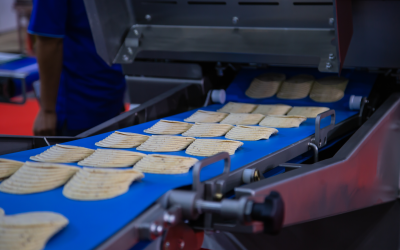Food Fraud, or what the FDA calls “Economically Motivated Adulteration (EMA),” is the intentional sale of food products that are not up to recognized standards for economic gain. The ramifications of Food Fraud can range from damage to brand reputations, damage to revenue for food retail businesses and processing establishments, to health complications for the consumer due to its impact on food safety. Food Fraud is a global business worth in excess of $50 billion annually; Grocery Manufacturers of America estimates that the annual cost of EMA in the United States is between $10 and $15 billion. By 2017, four sets of data had been compiled and meta-analyzed with results revealing that the most frequent global Food Fraud incidents by food-product category were: (1) fish/seafood, (2) dairy products, (3) meat products, (4) alcoholic beverages, and (5) oils/fats, while most frequently adulterated foods in the USA were: (1) olive oil, (2) milk, (3) honey, (4) saffron, and (5) orange juice.
Previous history of Food Fraud cases in the USA include: kangaroo and horse meat sold as beef; melamine in pet food; substitution of species in domesticated animal and game-animal ground meat; substitution of pork rectum for squid in calamari; Salmonella in peanuts and eggs; honey laundering; meat from undeclared species; and falsification of export certificates for Halal beef. Two cases of Food Defense violations are noteworthy: a religious sect contaminated restaurant salad bars and an individual sprayed mouse poison on food in snack bars. The single largest Food-Fraud crime ever prosecuted in the USA was honey laundering; over 7 years, a smuggling-ring moved $80 million worth of banned–and often Chinese–honey into the US.
EMA incidents are challenging for industry and regulators to prevent because the adulterants are usually innocuous and the adulteration is designed specifically not to be detected. 2017 through 2019 will long be remembered for the number of Food Fraud incidents. Specific Food-Fraud incidents included: sunflower oil substituted with mineral oil; swapping an intact product such as a fish filet; use of hydrolyzed leather protein in milk; poultry injected with hormones to conceal disease; use of antibiotics to reduce bacterial load or mask deterioration; use of undeclared, unapproved, or banned biocides; use of coloring agents on fruit to improve appearance; falsification of expiration dates; sale of Japanese star anise (which is toxic) as Chinese anise (which is a different species); sale of cooking oil recovered from waste streams; production and sale of products through unregulated channels; and “gray market” diversion involving intellectual-property infringement and production outside of regulatory control.
Operation Opson VIII (December 2018 to April 2019 in 78 countries by Interpol and Europol) found $118 million worth of potentially dangerous food and drink. It found tampered expiration dates on cheese and chicken, controlled medicines added to drinks, and meat stored in unsanitary conditions. Europol says, “This shows that criminals will take advantage of any opportunity to make a profit. Food Fraud deceives consumers, hurts their wallets, makes them pay for something they do not get, and can result in serious harm to the public’s health. Operation Opson VIII identified these Food-Fraud incidents: (1) counterfeit honey (Eritrea); (2) forged documentation of apples (Belarus); (3) counterfeit vodka (Russia); (4) alcoholic beverages for export sold domestically (South Africa); (5) counterfeit candy (Lithuania); (6) extra virgin olive oil that was actually sunflower oil; and (7) products claimed to be “Organic” that were not (16 EU member states). In 2019, the Canadian Food Inspection Agency stopped the import of >28,000 pounds of EMA honey.
The most fraudulent food products in the USA in 2018 were: (1) Organic, (2) Free-Range, (3) Wild Caught, and (4) Halal. An investigation by a publishing company revealed “how easy it was to fake Organic products because the USDA’s National Organic Program still has some gaps that can be exploited. Millions of pounds of soybeans and corn grown “Conventionally” in Turkey and Ukraine magically turned “Organic” and boosted the value of those products by millions of dollars. Products from China are even more susceptible to being mislabeled “Organic”; one study found that 37% of Chinese “Organic” products that it tested contained pesticide residues. But we also have problems generated by US farmers. Five farmers/brokers in Missouri, Nebraska, and Iowa conspired to sell $142 million worth of “Conventionally” grown grain as “Organic”.
One food category that is particularly susceptible is seafood. Oceania™ conducted the largest seafood fraud investigation to date, collecting more than 1,200 samples from hundreds of retail locations throughout the US. DNA testing revealed that one-third of the samples were not what they were purported to be. In September 2019, two cases of Food Fraud related to beef products occurred: (1) Officials at a provisions company pleaded guilty of conspiracy to defraud the United States. The defendants admitted to selling more than 775 thousand pounds of uninspected, misbranded, or altered meat to 32 prisons in 18 states; they processed cow hearts and added it to the ground beef on nights and weekends when inspectors were not present. (2) Two executives at a meat wholesaling company were arrested on charges of federal conspiracy to commit wire fraud. The defendants have been accused of selling US Choice beef as US Prime beef; between 2011 and 2014, they ordered their employees to systematically slice the US Choice stamp off of their cuts and restamp them with counterfeit US Prime stamps.
In the minds of those in animal agriculture, a Food-Fraud threat looms as numerous companies “misbrand” plant-based food products using nomenclature historically limited to beef, pork, poultry, butter, milk, cheese, yogurt, and cheese. “Imitation” is defined as a thing intended to simulate or copy something else. It has many synonyms: Fake, Forgery, Reproduction, and Impersonation. FDA has the responsibility under the Federal Food, Drug, And Cosmetic Act (FFDCA) to deem a food “misbranded” if its labeling is false or misleading, if it is offered for sale under the name of another food, or if it is an imitation of another food. FDA dictates that certain foods should be deemed “Imitation” if that food resembles another but is nutritionally inferior or fails to meet established characterizing-ingredient requirements. FDA is supposed to prohibit a food from being sold under the name of a different food, as well as imitations of another food, unless it bears the label “Imitation”. FDA has had, for decades, a “Standard Of Identity” (federal statutes codifying labels) for things like “meat,” “milk,” “cheese,” “butter,” and “yogurt” yet has allowed companies to market plant-based products like “Almond Milk,” “Peanut Butter,” and “Beyond Beef”–unimpeded.
A 2019 Food Safety Insights survey revealed that 36% of US/Canada (US/C) and 33% of International (INT) food processors “considered EMA to be a significant issue I have to deal with”. For combined US/C and INT food producers, 15% reported “having detected Food Fraud in our supply chain” and 29% “currently use analytical testing to detect Food Fraud”. Food commodities for which EMA was “considered to be a significant issue I have to deal with” were: 56% for spices, 44% for seafood, 42% for beverages, 36% for meat, 35% for dairy products, 31% for fruits/vegetables, and 24% for grains and milled products.
REFERENCES:
American Society of Animal Science. 2019. February 24, 2019.
Bechtel, Wyatt. 2019. Drovers. May 17, 2019.
Bonds, Missy. 2019. Texas and Southwestern Cattle Raisers Association. August 12, 2019.
Everstine, Karen. 2019. https://foodsafetytech.com/. January 15, 2019.
Everstine, Karen. 2019. https://foodsafetytech.com/. February 12, 2019.
Feedstuffs. 2018. October 4, 2018.
Ferguson, Bob. 2019. Food Safety Magazine. November Edition.
Food Quality & Safety. 2013. April Edition.
Fort Worth Star-Telegram. 2019. September 26, 2019.
Lyons, Jack. 2018. https://www.rentokil.com/. April 6, 2018.
Maday, John. 2015. Bovine Veterinarian. August Edition.
National Farmers Union. 2018. Morning Ag Clips. September 26, 2018.
National Public Radio. 2013. November 4, 2013.
New York Post. 2019. September 26, 2019.
Olmstead, Larry. 2018. Forbes. April 12, 2018.
Sherman, Elisabeth. 2017. Food & Wine. May 15, 2017.
Smith, Gary. 2017. Texas A&M University. July 29, 2017.
Smith, Gary. 2018. FSNS Quarterly Newsletter. Spring 2018.
Smith, Gary. 2019. Texas A&M University. July 30, 2019.
Stevens, Shawn. 2019. Meatingplace. May 27, 2019.
Washington Post. 2017. May 13, 2017.
Whitworth, Joe. 2019. https://foodsafetynews.com/. June 22, 2019.



